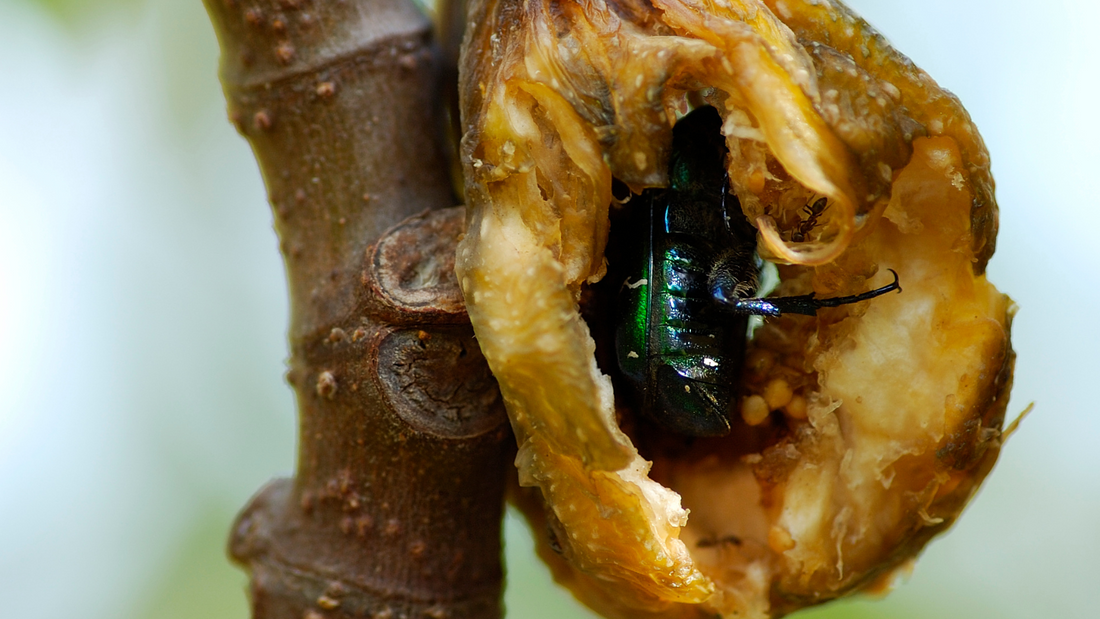You may have read the common myth that figs have dead bugs inside them which gives them an extra special crunch when you eat them. I've eaten a lot of figs and to my knowledge have never eaten a wasp in the process. Here we'll explain the different types of figs, which ones need pollination via a fig wasp, and which ones don't.
The Four Types of Figs
Capri Figs
These fig trees serve as the host for the fig wasp. The figs produce pollen that can be transferred to other figs for pollination purposes. These figs aren't usually considered edible, although some contend that there are some edible varieties of capri figs. But for the most part, these trees are only used to pollinate other fig trees that require pollination.
Recall that a fig is not actually a fruit, but an inverted flower structure called a "syconium." Unlike the other types listed below, the inside of a Capri fig has male and female flowers. The male flowers produce the pollen needed to pollinate other figs
The "style" is the stalk of the female reproductive parts inside the fig. Capri figs are "short-styled," which simply means they have shorter "stalks" than the other fig types listed below. The shorter styles provide room for the fig wasp to get inside the Capri figs and lay eggs. In the process the fig wasp will get pollen on its wings and body, which can then be transferred to a fig that needs pollination.

Smyrna Figs
Also called "caducous" figs, Smyrna figs require pollination for the figs to develop properly. The interior of these figs contain only female flowers, which must be pollinated to fully develop. As such, Smyrna figs must be grown in the presence of Capri figs if you want to produce tasty figs to enjoy.
Smyrna figs don't produce an early or "Breba" crop of figs. They only have the main crop that must be pollinated. This process requires the fig wasp collecting pollen inside a Capri fig and transferring that pollen to the Smyrna fig. This is how the myth of figs having bugs inside was perpetuated. Yes, some figs do need bugs to get inside them to develop, but these varieties aren't that common in the United States.
It's highly unlikely that you would purchase a Smyrna fig without knowing it. These types are not commonly sold online and we don't currently carry any Smyrna fig varieties. They are popular in Turkey and other countries where Capri figs are present for pollination purposes.
San Pedro Figs
Also called "intermediate" figs, San Pedro types produce both an early (Breba) crop of figs and a main crop of figs. This is the main difference between a Smyrna and San Pedro Fig. As mentioned above, Smyrna figs don't produce a Breba crop.
The early crop on San Pedro fig trees is parthenocarpic and doesn't require pollination for the fruit to fully develop. However, the main crop of figs that follows is not parthenocarpic and does require pollination.
As a result, the same process mentioned above will be necessary to get edible main crop figs from San Pedro types. A Capri fig tree must be present in addition to the wasp needed to transfer the pollen. So you can get edible figs from these via the early crop, but you'll need pollination for the main crop.
Common Figs
These are the type of figs that we grow and carry here at Lazy Dog Farm. They are parthenocarpic, which is a fancy word for "produces fruit without pollination." As a result, you don't need other trees nearby or a certain species of wasp to pollinate them.
We often get asked if you need to plant multiple fig trees to get quality fig production. And if you've made it this far in the blog, you know the answer to that question is no. You can plant a single common fig tree and enjoy plenty of delicious figs with no pollination necessary.
As long as you're planting common fig varieties, you don't need to worry about having other trees present for pollination purposes. And rest assured, you're probably not going to be eating bugs when you're eating figs. Some fig varieties will have more open "eyes" or ostioles which will allow bugs to enter, but there shouldn't be any dead wasps or wasp eggs inside the common figs you harvest.


